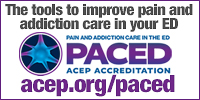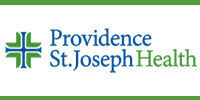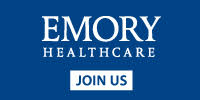- August 15,2025 | ISSN 1940-6967
- The National Association Of Medical Doctors
Featured Sponsors
When Patient Access To Results Complicates Care
By Manav Midha
"I hid her MyChart radiology report on purpose."
I was shocked to hear the neurologist (Dr. A) tell me this after our patient had left the exam room.
Dr. A is universally admired by my medical school class for both his teaching and his ability to connect deeply with patients; the waiting list to join him for weekly clinic runs a semester long. I was ecstatic to learn from him. When I heard him say these words, I became even more intrigued than I was already.
Our patient had come for an evaluation after experiencing non-focal neurological symptoms for several months. She had a family history of multiple sclerosis (MS) and wanted to be evaluated for it; as part of the diagnostic process, she had undergone an MRI a few weeks earlier. The purpose of this appointment was to review that study and discuss a plan moving forward. She was understandably nervous in the clinic -- her rapid speech and jittery feet made that clear.
As Dr. A pulled up her scans in Epic PACS on the exam room computer to go through them live, she pulled out her iPhone to record for future reference. At the same time, I leaned over from my spot in the corner -- searching for the periventricular white matter lesions that are diagnostic hallmarks of MS (I had just reviewed that Anki card).
Scrolling through the axial MRI showed white dots. But these didn't look like MS lesions. Dr. A explained that there are many possible causes of white spots on a brain MRI -- not just MS. For instance, they can be caused by white matter hyperintensities due to microvascular damage in people with history of migraine (our patient had migraine history). This patient's imaging and clinical history made it likely that she neither had MS nor another severe neurological condition.
While the seemingly idiopathic nature of her symptoms did not offer her full liberation from worry, the patient appeared visibly relieved that she did not have MS or another severe condition. Dr. A discussed a few more potential diagnostic options with her and then she left.
When Less Information Is More
Dr. A made the comment to me about hiding her MyChart radiology report as we waved goodbye to the patient -- he had foreseen that her report would say she has MS. And it turns out it did. To avert unnecessary worry and stress, he had concealed it before he could present her with the full clinical picture during her clinic visit. I asked how commonly he did this. He smiled and said, "often."
He explained that when a busy neuroradiologist sees a non-urgent MRI, it is understandable that he follows Occam's Razor and arrives at the parsimonious impression. In earlier eras, this would not have been a major issue -- the clinical physician would have a chance to review the radiology report himself, call the radiologist, and formulate a careful plan to communicate the diagnosis with the patient. But in a post-21st Century Cures Act world, in which patients can see their imaging reports and lab test results before their treating physician has even seen them, this is often not possible.
This law -- meant to reduce patient anxiety as they await medical results, improve patient preparedness for discussions, and more fundamentally increase patient autonomy over their own health data -- has positives in some cases. But it also has negatives.
This neurology clinic example is one such instance. In a more severe example, imagine learning the mass you had biopsied after a few months of headaches is a grade IV astrocytoma on a 6.1-inch screen while checking emails -- alone, with no one to guide you, or even to hold your hand. Imagine then learning that your diagnosis was incorrect, and you do not have cancer!
Does this really reduce patient anxiety? What about its impact on physicians, who will inevitably receive panicked phone calls and messages before they are prepared for what could be sensitive discussions?
Patient Autonomy Versus Paternalism
The medical community's move towards patient autonomy -- via increased health records access, price transparency laws meant to increase "shopability" of medical services, and growing direct-to-consumer (DTC) care -- has been accelerating and is likely here to stay. Consumerism has been touted as the solution to problems from patient dissatisfaction to excess spending. In fact, in this term, "consumerism," we can see a poignant evolution in contemporary medicine's conception of the patient.
In at least one definition, consumerism means "the promotion of the consumer's interests." At first glance, this seems a logical framework for medicine -- promoting the interests of patients is why most physicians practice. But this leaves a bigger question: do patients always know their best interests?
American healthcare originally operated under "medical paternalism" -- in which physicians had parent-like control over their patients, under the assumption that doctors knew patients' interests better than the patients themselves. The 1847 Code of Medical Ethics described the patient's obligation to his physician as such:
"The obedience of a patient to the prescriptions of his physician should be prompt and implicit. He should never permit his own crude opinions as to their fitness, to influence his attention to them. A failure in one particular may render an otherwise judicious treatment dangerous, and even fatal."
To a contemporary reader, these words likely seem anachronistic, extreme, and inconceivable for our times. And they should. A physician demanding "obedience" from his patient is indeed wrong. But perhaps the point that a good doctor knows what is best for his patient is not without merit. Could anyone make a sound argument that the patient was harmed by Dr. A protecting her from a false diagnosis that would likely cause severe stress?
As medicine evolves in the age of data democratization, digital consumer health companies, and promulgated consumerist business interests, we will undoubtedly move towards less medical paternalism and more patient autonomy. At a philosophical level, like most things in life, the best approach to these competing forces likely lies somewhere in the middle of the extremes. Yet, I hope that as my generation enters practice, we will be mindful not to absolve ourselves of our responsibility to protect our patients under the guise of patient autonomy.
*Some details have been modified to preserve patient anonymity.
Manav Midha is an MD candidate at the Icahn School of Medicine at Mount Sinai and a researcher at the USC Schaeffer Center for Health Policy & Economics.
Articles in this issue:
- When Patient Access To Results Complicates Care
- Why Sedation Access Varies By Clinic & Hospital
- Alcohol & Pancreatic Cancer: New Evidence About Risk
- The Executive Order That Could Cripple Science
- Four Ways Doctors Do Retirement Wrong
- Physician Group Ditches Federal Funding
- New Student Loan Caps Could Shut Low-Income Students Out Of Medicine
Top Physician Opportunities
Journal of Medicine Sign Up
Get the Journal of Medicine delivered to your inbox.
In This Issue
- When Patient Access To Results Complicates Care
- Why Sedation Access Varies By Clinic & Hospital
- Alcohol & Pancreatic Cancer: New Evidence About Risk
- The Executive Order That Could Cripple Science
- Four Ways Doctors Do Retirement Wrong
- Physician Group Ditches Federal Funding
- New Student Loan Caps Could Shut Low-Income Students Out Of Medicine
Archives
Masthead
-
- Editor-in Chief:
- Theodore Massey
- Editor:
- Robert Sokonow
- Editorial Staff:
- Musaba Dekau
Lin Takahashi
Thomas Levine
Cynthia Casteneda Avina
Ronald Harvinger
Lisa Andonis
Leave a Comment
Please keep in mind that all comments are moderated. Please do not use a spam keyword or a domain as your name, or else it will be deleted. Let's have a personal and meaningful conversation instead. Thanks for your comments!















*This site is protected by reCAPTCHA and the Google Privacy Policy and Terms of Service apply.